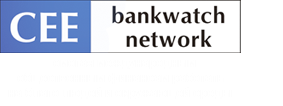Arena Zagreb, Croatia
Arena Zagreb is the largest sports hall in Croatia, with a gross area of 90 500 square metres. It was opened in the beginning of 2009, and already in July 2009 the company had accumulated debt of EUR 600 000. To cover the yearly costs of loans, Arena Zagreb has to be occupied for 212 days per year, which turns out to be impossible.
Key issues:
unnecessary project
overestimated income
poor value for money
burden on public budgets
rising costs
The project was developed between the Republic of Croatia, the City of Zagreb and the Ingra-TriGranit consortium as a public-private partnership.
The City of Zagreb and Republic of Croatia committed in the contract to pay Ingra EUR 7.2 million per year, plus EUR 300 000 per year for the costs of maintenance, for the next 28 years, which will be a total of EUR 210 million.
Timeline
June 14 2007: contract with Ingra and TriGranit signed
21 July 2007: beginning of construction
January 2009: arena opens for the 21st World Handball Championship
Arena Zagreb was opened in the beginning of 2009, and already in July 2009 the company was EUR 600 000 in debt. To cover the yearly costs of loans, Arena Zagreb has to be occupied for 212 days per year. In the first 6 months, there were events for 71 days, and until the end of the first year it was expected that the Arena would be occupied for a total of 154 days. So it is obvious that it was not possible to generate profit.
In 2010 the cost of maintenance was 4 times higher than envisaged in the contract - EUR 1.2 million.
Ingra invested EUR 89 million in the construction of Arena Zagreb, and established the company Lanište d.o.o. that owns the Arena during the contract period and is in charge of the maintenance. The funds are paid by Zagreb Holding (the City of Zagreb’s municipal company), which just transfers the money that it receives for this purpose from the City of Zagreb and the Croatian Government.
In 2010 the cost of maintenance was 4 times higher than envisaged in the contract - EUR 1.2 million. Ingra claimed that the contract allows changes in the costs of maintenance, because the costs depend on the number of visitors at the Arena. If this is the case, it is possible that total costs in 28 years will be EUR 20 million higher than planned.
Ingra decided to close down Arena Zagreb starting from 01 January 2011, and demanded at least EUR 4 million from Zagreb Holding in order to open it again.
At the end of 2010, Ingra claimed that Zagreb Holding owed it EUR 6.4 million. Because of that, Ingra decided to close down Arena Zagreb starting from 01 January 2011, and demanded at least EUR 4 million from Zagreb Holding in order to open it again. Zagreb Holding claimed that it was not able to cover the costs because it had not received the funds from the City of Zagreb and the Croatian Government.
As the construction was financed by BKS Bank AG from Klagenfurt, Austria, the contract gives the bank the right to take over Arena Zagreb if three instalments of the loan are not paid.
City announced to buy the Arena
At the end of January 2011, the City of Zagreb and Zagreb Holding covered the debt to Ingra. However, the Chief of Zagreb’s Department for Finance Slavko Kojic said that the Arena is too expensive and that it could have been constructed for one third of the total costs (EUR 210 million, including interest).
He announced the possibility that the City of Zagreb would take out a loan to buy Arena Zagreb, and that it would be cheaper to pay interest to the bank, than paying EUR 7.5 million per year to Ingra. Thus he indirectly admitted that the PPP model was the wrong approach for the construction.
However, at the time of writing (May 2012) nothing has changed in the ownership structure of Arena Zagreb.





